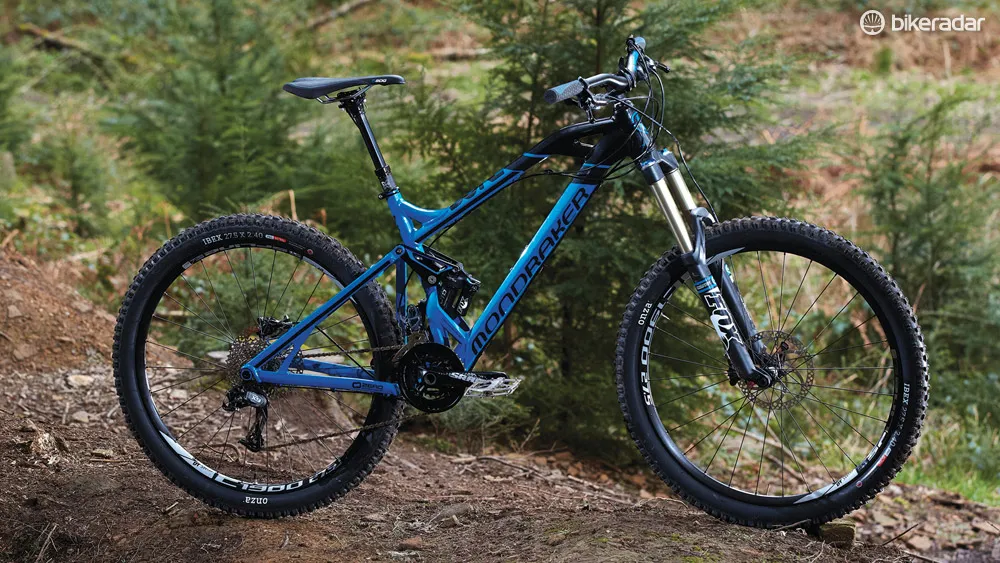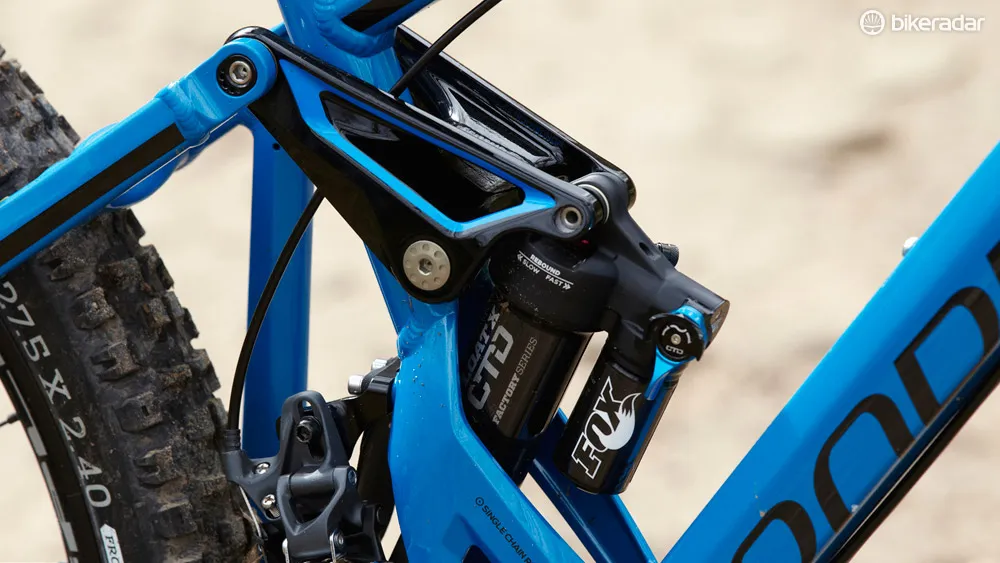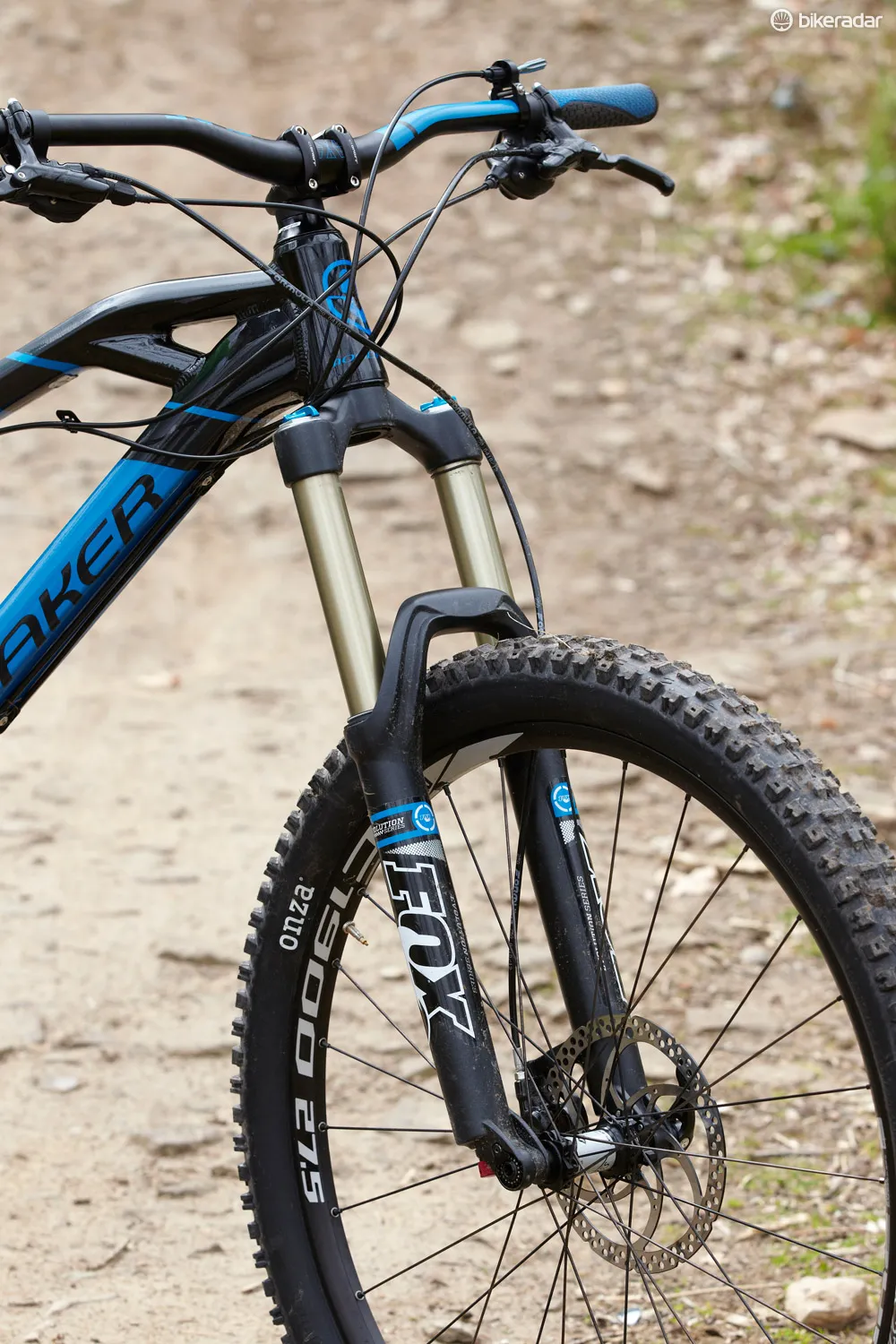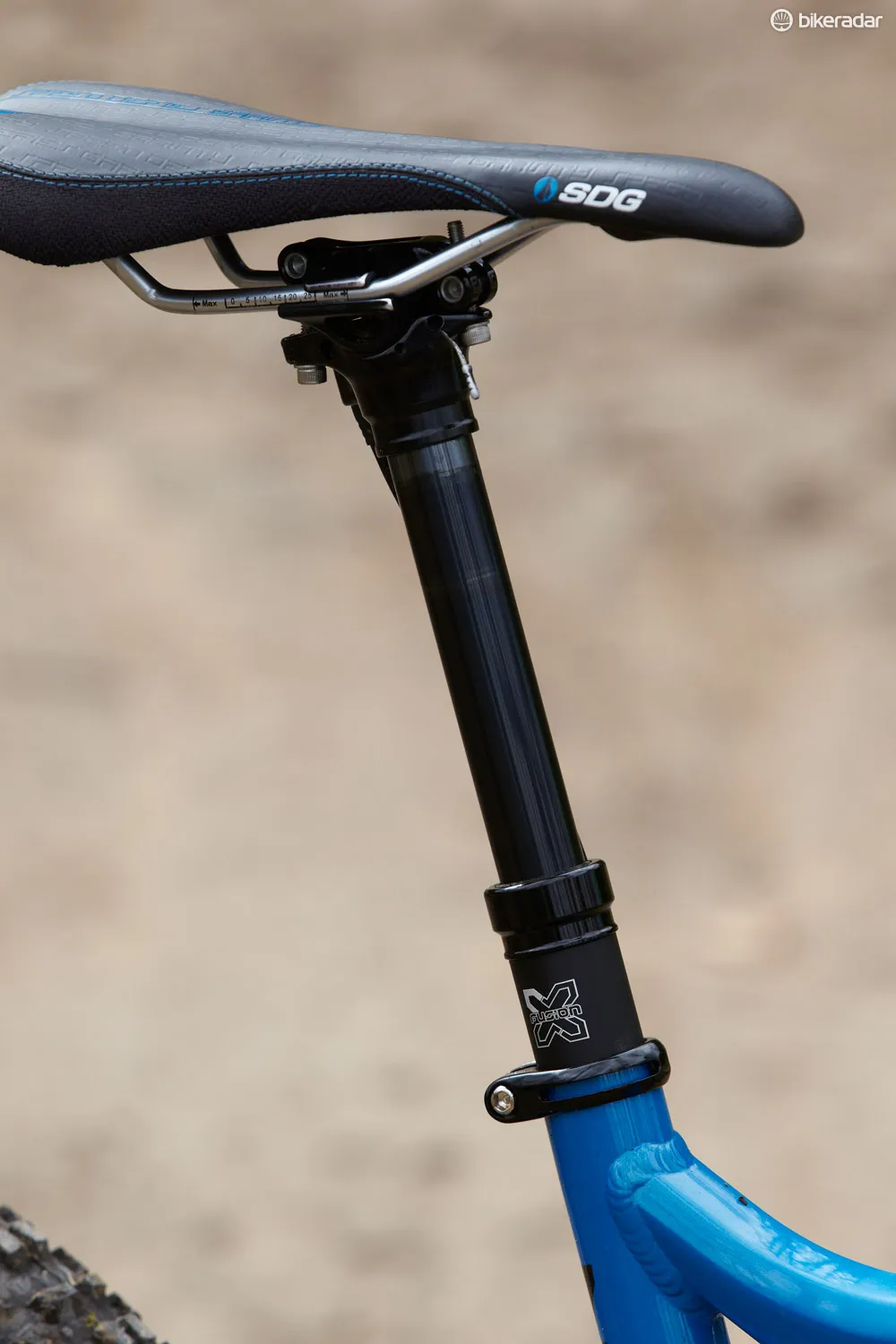Spanish innovator Mondraker has now built every aggro bike in its 2014 range around its radical Forward Geometry concept. What is it, and can the rest of the Dune R match up?
Frame and equipment: crunching the numbers
The physical side of Forward Geometry is simple. Mondraker adds 25mm (1in) to the top tubes (and wheelbases) of its frames and takes the same off its OnOff stems, which are available in the 30mm format tested, or a mad looking ‘bar on top of the head tube’ 10mm length. The angles are pretty standard, but the seat tube and chainstays are very short.
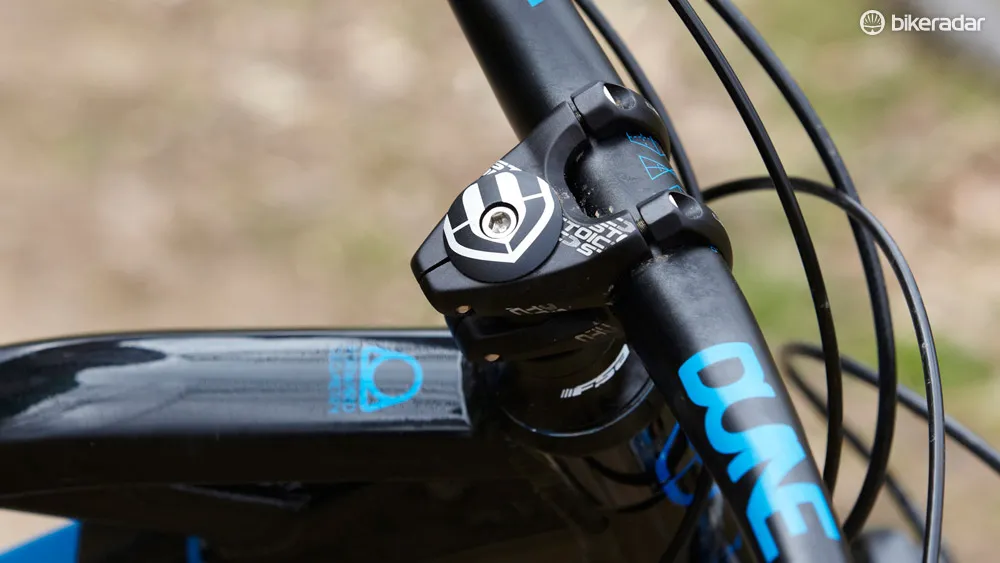
Mondraker’s Forward Geometry centres around a radically short 10 or 30mm stem and extended front triangle
The bottom corner of the mainframe is an open bottomed ‘basket’ that allows the Fox Float X shock to be squeezed between the upper and lower linkages joining the front triangle to the relatively skinny-tubed rear subframe. There’s a lifetime frame warranty, though details such as the easy-to-lose 142x12mm rear axle terminal and a glue-on cable guide that peeled off our bike are disappointing.
Non lock-on grips and an Evolution series Fox 34 fork aren’t a welcome sight when it comes to smoothly consistent control either. Happily the Factory series Float X piggyback shock is much smoother than the Evolution series standard Floats on peers such as the Scott Genius LT 720. Tuning is complicated by the almost impossible to reach rebound adjuster, but leaving the CTD lever in ‘Trail’ mode kept the bike on its toes without it tapping out too much on stutter bump sections.
The mixed SRAM 2x10 transmission and Formula C1 brakes are on-par choices, and the externally routed X-Fusion dropper post works OK too. The straight-pull spoke DT Swiss Spline wheels and heavy-duty Onza IBEX treads don’t do overall weight or responsiveness any favours, but they provide a reassuringly surefooted baseline to the Dune’s radical handling.
Ride and handling: punching above its weight
It says a lot about Mondraker’s mindset that the firm puts geometry before specification on its website. You’ll soon realise that’s totally appropriate too, as the Dune rapidly begins to outride its kit restrictions on the trail.
Despite the radical looking front end, if you stop looking down and concentrate on riding the trail, not the bike, the Dune feels ‘right’ surprisingly quickly. The 30mm stem and wide 760mm bar need minimum effort to turn but the slack head angle keeps the steering totally stable and on track.
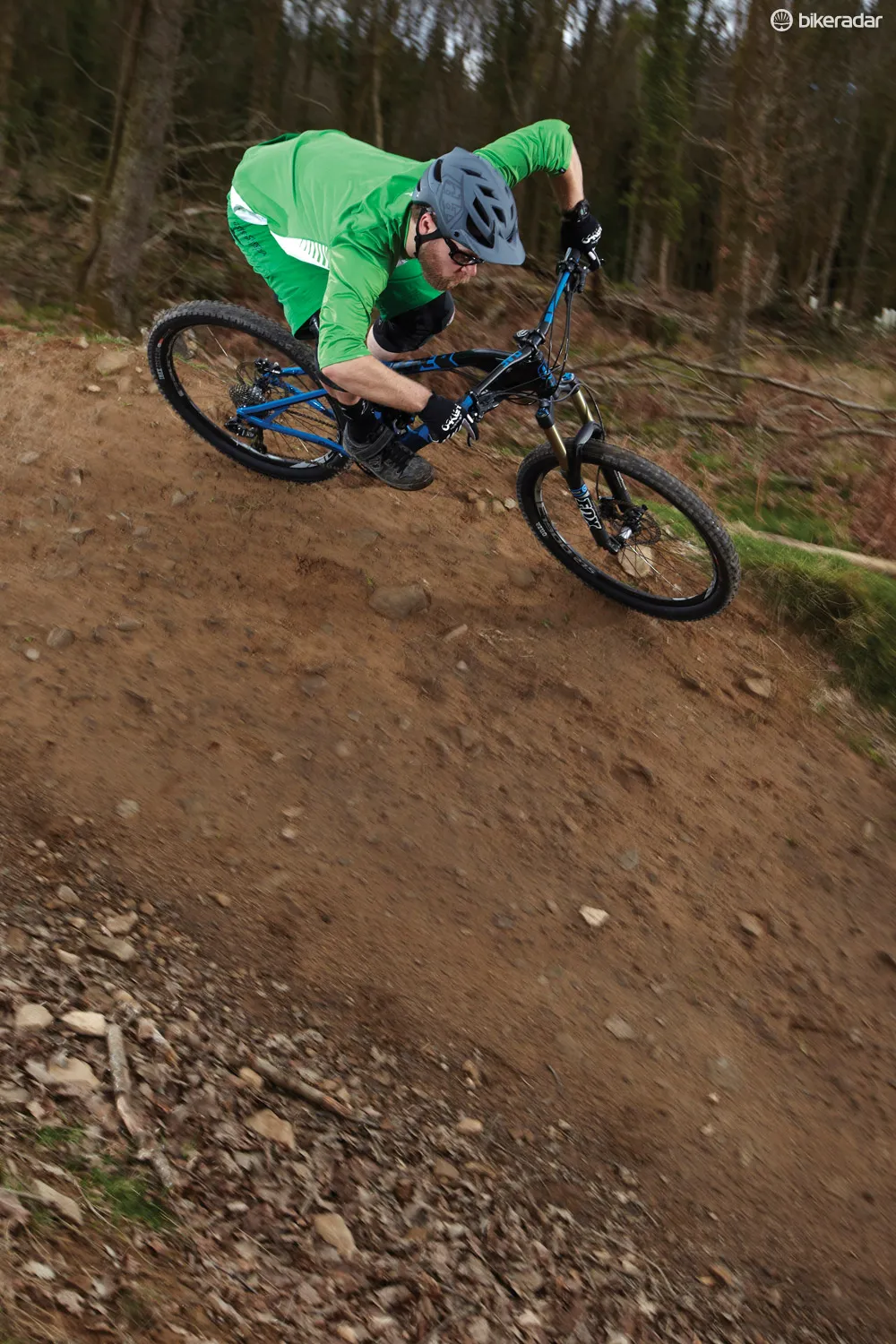
The big Onza tyres underline the already comically surefooted Dune with maximum grip to create a total ripper of a bike
The long front end also means you feel like you're sitting within the bike rather than about to be spat over the front, while the short back end flicks out with insolent ease. The result is a bike that can corner so fast and confidently that it can potentially reset all your braking point, grip level and exit speed expectations on any turn, from loose and open to ragged and rutted, if you’re brave enough to trust it.
Despite noticeable flex in the back end, the extra long wheelbase and rock eating Zero suspension set-up keep the Dune trucking or carving through serious trouble without stammering off line or hanging up on square edges. The Float X shock works OK to shrug off hits and stick the wheel on to the trail through most random rock and root sections too.
The Evolution series fork was as underwhelming as ever though, feeling OK for the first 40 per cent of the stroke but then refusing to give up the rest even at super-low pressures. It’s a mark of how well the geometry works that even with the fork banging off more stuff than it soaked up, the front wheel was always where we wanted it – or at least back there a split second after being knocked off line. It’s definitely worth getting the fork retuned to give a more consistent feel right through the stroke though.
While the wheelset weight certainly doesn’t help the Dune’s acceleration, the bike still climbs surprisingly well, clambering up steps and rock ledges with enough pedal feedback to let you know when to power up or back off. Flicking into Trail mode keeps the suspension steady even when you’re stomping the pedals in the big ring, though granny ring pedalling is more mushy. Wheel placement is impeccable even on tricky switchbacks too, with none of the usual pop-up or flop of slack, long-travel bikes.
As you can probably tell, most of our test team were really into the Forward Geometry handling, though some riders complained that the Dune was too glued to the ground to feel alive (in which case, try the 140mm Foxy). A few just didn’t sync with the handling at all, but with Mondraker’s UK distributors Silverfish running an extensive demo tour, we’d definitely give one a go if you can.
